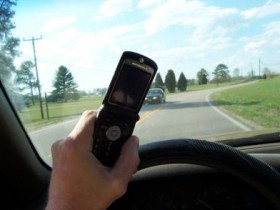A recent study by Texas A&M University's Texas Transportation Institute found that texting, or emailing, while driving doubles reaction time and makes drivers more likely to miss a flashing light.
The study was composed of 42 drivers between the ages of 16 and 54 who drove on an 11-mile (17 km) closed test course while sending or receiving text messages, and again while focusing completely on the road.

The study was composed of 42 drivers between the ages of 16 and 54 who drove on an 11-mile (17 km) closed test course while sending or receiving text messages, and again while focusing completely on the road.
In the interest of safety for both participants and the research staff, researchers minimized the complexity of the driving task, using a straight-line course that contained no hills, traffic or potential conflicts other than the construction zone barrels. Consequently, the driving demands that participants encountered were considerably lower than those they would encounter under real-world conditions.
The researchers then asked the drivers to stop when they saw a flashing yellow light and recorded their reaction time. The typical reaction time without texting was between one and two seconds, but while texting it increased to three to four seconds, regardless of whether the driver was typing or reading a text.The researchers also found that a texting driver was 11 times more likely to miss the flashing light.
The fact that the study was conducted in an actual driving environment is important. According to research manager Christine Yager most research on texting and driving has been limited to driving simulators, whereas this study involved participants driving an actual vehicle. While the researchers believed their results are more significant since the study was in an actual driving environment they wrote that, "it's frightening to think of how much more poorly our participants may have performed if the driving conditions were more consistent with routine driving."
Perhaps this research will reach some of Texas A&M's more influential elected alums.

